Are you considering adding a Bull Terrier to your family? Known for their distinctive appearance and playful personalities, Bull Terriers make great companions for those who are willing to put in the time and effort to properly train and socialize them. Before making a decision, it’s important to learn more about the breed’s characteristics, exercise needs, and potential health issues to ensure that a Bull Terrier is the right fit for you and your lifestyle. In this guide, we’ll explore everything you need to know about this unique and lovable breed.
Breed Category: Terrier
Country of Origin: England
Average Size:53-61 cm
Average Weight:20-38 kg
Average Life Span: 11-14 years
Grooming Requirements: Low
Exercise Requirements:High
History and Origin
The Bull Terrier is a breed of dog that has a fascinating history and origin. This breed was originally developed in England in the 19th century for the purpose of dog fighting. The Bull Terrier was created by crossing the Old English Bulldog with the now-extinct White English Terrier. The result was a dog that was strong, agile, and tenacious, with a distinctive egg-shaped head.
The Bull Terrier was first recognized as a breed in 1885 by the English Kennel Club. The breed quickly gained popularity, and Bull Terriers were soon being bred for show as well as for fighting. In the early 20th century, the breed was further refined by crossing it with the Spanish Pointer, resulting in a more streamlined and athletic dog.
During World War I, the Bull Terrier’s popularity declined, as many breeders were forced to give up their dogs due to the war effort. However, the breed experienced a resurgence in the 1920s and 1930s, thanks in part to the popularity of the cartoon character “Spuds McKenzie,” a Bull Terrier who was the mascot for Budweiser beer.
Today, the Bull Terrier is a popular breed around the world, known for its loyalty, intelligence, and playful nature. The breed is recognized by the American Kennel Club and the Kennel Club in the UK, and is often used in advertising and media due to its distinctive appearance. However, the Bull Terrier still has a reputation as a tough and aggressive breed, and it is important for owners to socialize and train their dogs properly to prevent any negative behavior.
Despite its history as a fighting dog, the Bull Terrier has become a beloved companion for many people around the world. The breed’s distinctive appearance and playful personality make it a popular choice for families and individuals alike. Whether you are looking for a loyal and affectionate pet or a show dog, the Bull Terrier is a breed with a rich history and a bright future.
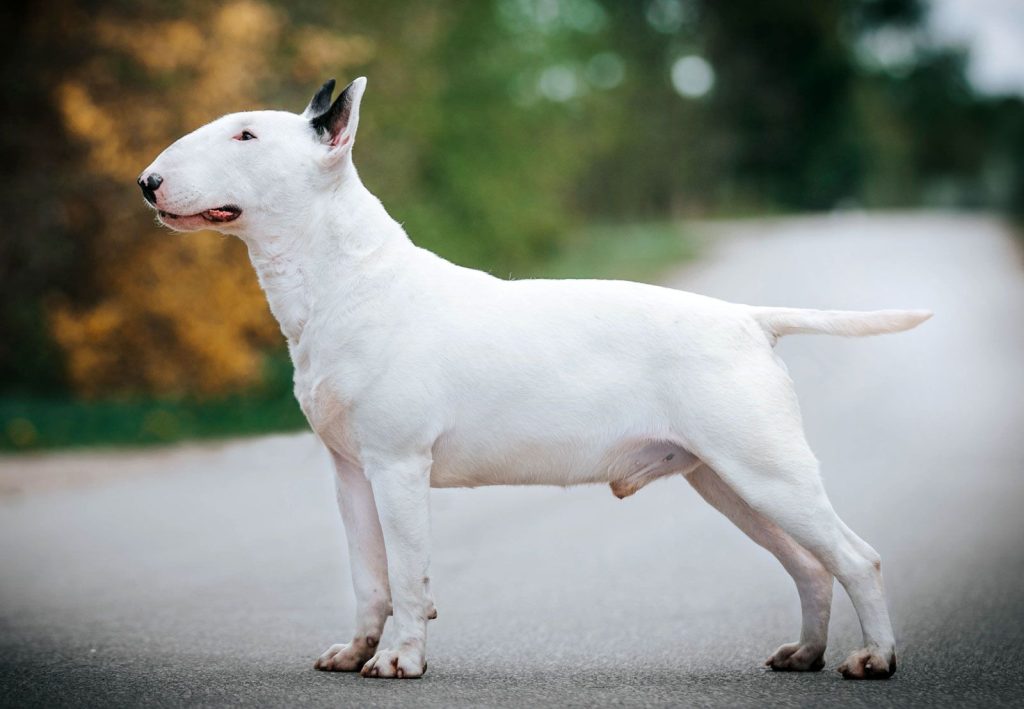
Size and Breed Category
The Bull Terrier is a medium-sized dog breed that typically weighs between 20-35 kilograms and stands at a height of 45-55 centimeters at the shoulder. They have a muscular and athletic build, with a short, smooth coat that comes in a variety of colors, including white, black, brindle, and fawn. Their distinctive egg-shaped head and small, triangular eyes give them a unique appearance that sets them apart from other breeds. Despite their muscular build, Bull Terriers are known for their agility and speed, making them excellent athletes and companions for active owners.
Bull Terriers fall into the Terrier breed category, which is known for their tenacity, courage, and loyalty. Originally bred for bull-baiting and dogfighting, Bull Terriers have since been bred for companionship and make excellent family pets. They are known for their playful and mischievous personalities, and their love for human companionship. However, they can be stubborn and independent at times, which can make training a challenge. Overall, Bull Terriers are a unique and beloved breed that make great companions for those who are willing to put in the time and effort to train and care for them.
Fur Length and Colour
The fur of a Bull Terrier is short and smooth, with a glossy texture. The fur is dense and lies close to the skin, giving the dog a sleek appearance. The fur is also quite hard to the touch, which helps to protect the dog from scratches and other injuries. The fur can come in a variety of colours, including white, black, brindle, fawn, and red. Some Bull Terriers may also have markings on their fur, such as spots or patches. The fur colour and markings can vary greatly between individual dogs, making each Bull Terrier unique.
The length of a Bull Terrier’s fur is relatively short, with the fur on the body being slightly longer than the fur on the head and legs. The fur on the head is particularly short and smooth, giving the dog a distinctive appearance. The fur on the body is also quite dense, which helps to keep the dog warm in colder weather. The fur on the legs is shorter and thinner, which allows the dog to move more easily. Overall, the fur of a Bull Terrier is an important part of their appearance and helps to protect them from the elements.
Termperament and Trainability
Bull Terriers are known for their lively and energetic temperament. They are highly active dogs that require plenty of exercise and mental stimulation to keep them happy and healthy. They are also very affectionate and loyal to their owners, making them great family pets. However, their high energy levels can sometimes make them difficult to handle, especially for inexperienced owners. It is important to provide them with plenty of training and socialization from a young age to ensure they grow up to be well-behaved and obedient dogs.
When it comes to trainability, Bull Terriers can be a bit stubborn at times. They have a strong will and can be quite independent, which can make them challenging to train. However, with patience and consistency, they can be taught to follow commands and behave appropriately. Positive reinforcement techniques, such as rewards and praise, tend to work best with this breed. It is also important to establish yourself as the pack leader and to be firm but fair in your training methods. With the right approach, Bull Terriers can be trained to be well-behaved and obedient dogs.
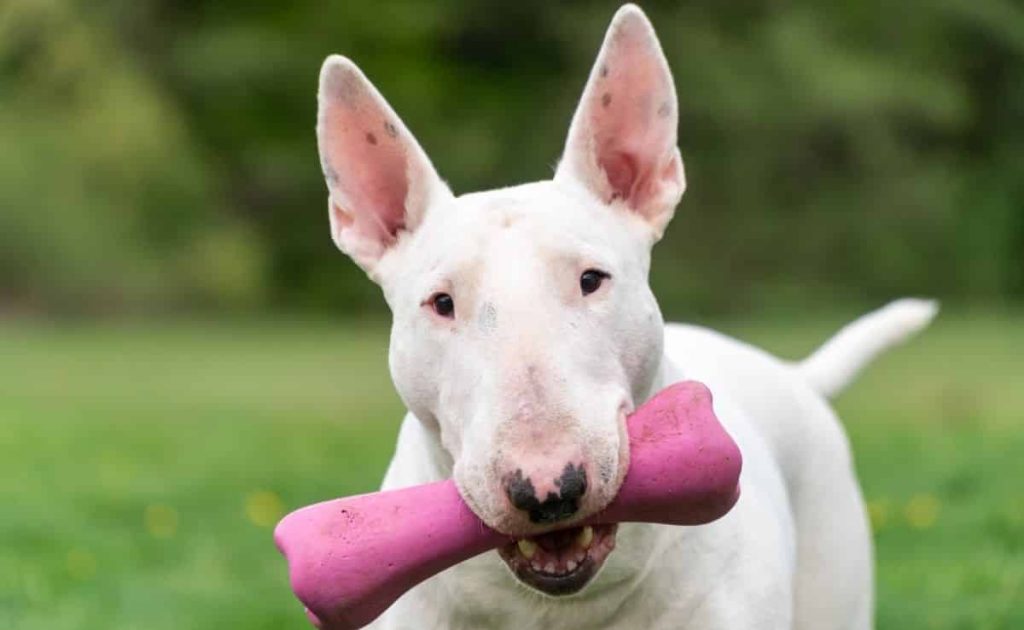
Known Health Conditions
Bull Terriers are prone to certain health conditions that owners should be aware of. One of the most common issues is deafness, which affects around 20% of the breed. This can be caused by a genetic mutation or exposure to loud noises. Another condition that Bull Terriers are susceptible to is skin allergies, which can cause itching, redness, and hair loss. These allergies can be triggered by a variety of factors, including food, pollen, and flea bites. Additionally, Bull Terriers are at risk for developing kidney disease, which can lead to kidney failure if left untreated. Regular check-ups with a veterinarian can help detect these conditions early and ensure that the dog receives appropriate treatment.
Another health concern for Bull Terriers is heart disease, specifically dilated cardiomyopathy. This condition causes the heart to enlarge and weaken, which can lead to heart failure. Bull Terriers are also prone to developing patellar luxation, which is when the kneecap dislocates from its normal position. This can cause pain and lameness in the affected leg. Finally, Bull Terriers may be at risk for developing certain types of cancer, such as mast cell tumors and lymphoma. Early detection and treatment are crucial for managing these conditions and improving the dog’s quality of life. Owners should be vigilant for any signs of illness and seek veterinary care promptly if they suspect their Bull Terrier may be unwell.
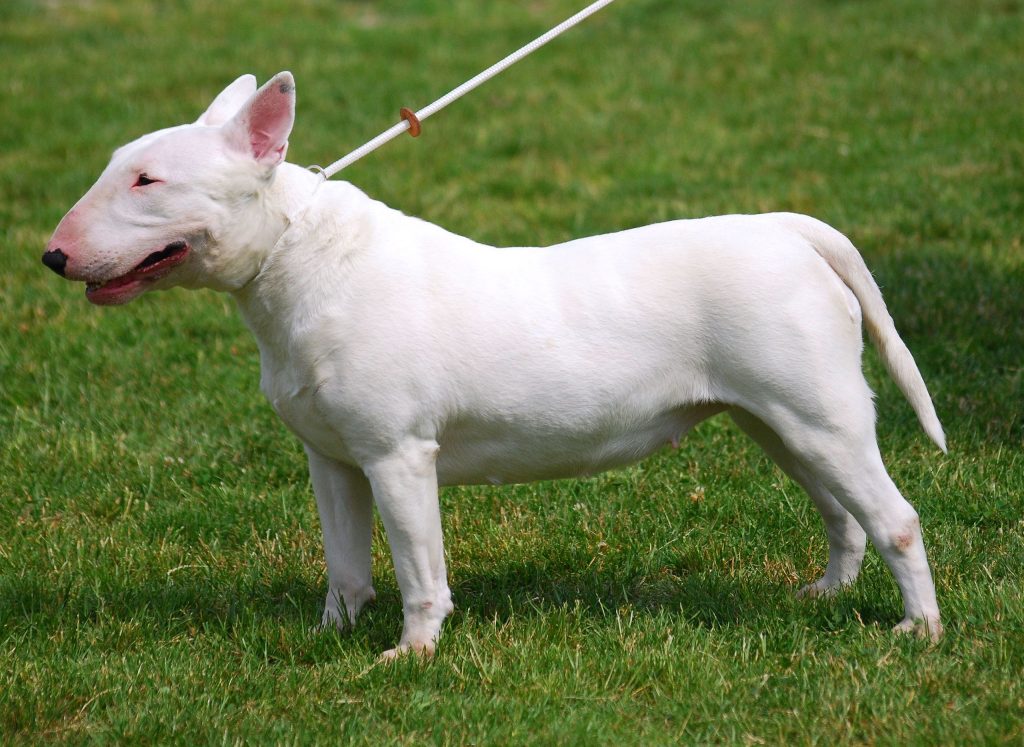
Openness to Strangers
Bull Terriers have a reputation for being friendly and sociable with strangers. They are known to be outgoing and curious, often approaching new people with enthusiasm. This breed is not typically shy or reserved, and they tend to enjoy meeting new people and making new friends. Bull Terriers are also known for their loyalty and affection towards their owners, which can sometimes extend to strangers as well. They are generally not aggressive towards people, and are more likely to greet strangers with a wagging tail and a friendly lick than with any kind of hostility.
However, it is important to note that individual Bull Terriers may vary in their openness to strangers. Some may be more reserved or cautious around new people, while others may be overly exuberant and need to be trained to control their excitement. Additionally, like all dogs, Bull Terriers require proper socialization and training to ensure that they are well-behaved and comfortable around people of all ages and backgrounds. With the right care and attention, Bull Terriers can make wonderful companions and are often beloved for their friendly and outgoing personalities.
Playfulness Level
The Bull Terrier is a highly energetic and playful breed of dog. They are known for their love of play and their ability to keep their owners entertained for hours on end. Whether it’s playing fetch, chasing after a ball, or simply running around in the backyard, the Bull Terrier is always up for a good time. They are also known for their love of water and are often found splashing around in pools or ponds.
Despite their playful nature, Bull Terriers require a lot of exercise to keep them healthy and happy. They are a high-energy breed and need plenty of opportunities to run and play. Owners should be prepared to take their Bull Terrier for long walks or runs every day, and provide them with plenty of toys and games to keep them occupied. With the right amount of exercise and stimulation, the Bull Terrier can make a wonderful companion for families and individuals alike.
Suitability as a Pet for Children
Bull Terriers have a reputation for being loyal and affectionate towards their owners. They are also known for their playful and energetic nature, making them a great companion for children who enjoy outdoor activities. However, due to their strong-willed personality, they require consistent training and socialization from an early age. Additionally, their muscular build and high energy levels mean they need plenty of exercise and mental stimulation to prevent destructive behavior. Overall, Bull Terriers can make great pets for children with the right training and care.
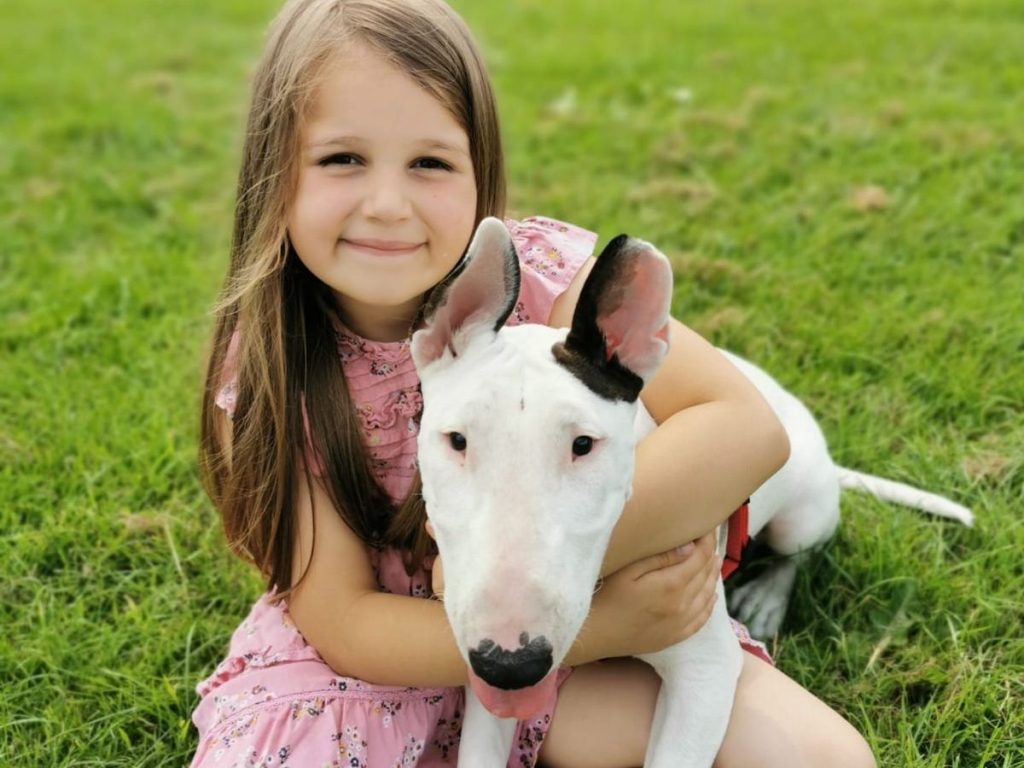
Exercise Needs
Bull Terriers require a moderate amount of exercise to maintain their physical and mental health. They are an energetic breed that enjoys daily walks and playtime in a secure, fenced area. A minimum of 30 minutes of exercise per day is recommended, but they can handle more if given the opportunity. Bull Terriers also enjoy participating in activities such as agility, obedience, and flyball. It is important to note that they can be prone to weight gain, so regular exercise and a balanced diet are essential for their overall well-being.
In addition to physical exercise, Bull Terriers also require mental stimulation to prevent boredom and destructive behavior. They are intelligent dogs that enjoy learning new tricks and participating in training sessions. Interactive toys and puzzles can also provide mental stimulation and prevent them from becoming bored. It is important to provide a variety of activities to keep them engaged and prevent them from becoming restless. Overall, Bull Terriers are a lively and active breed that require both physical and mental exercise to thrive.

Suitability for a Multi-Pet Family
Bull Terriers have a reputation for being aggressive towards other animals, particularly other dogs. However, this is not always the case and much depends on the individual dog’s temperament and socialization. Some Bull Terriers can coexist peacefully with other pets, while others may display dominance or aggression. It is important to introduce a Bull Terrier to other pets slowly and carefully, and to supervise their interactions closely. With proper training and socialization, a Bull Terrier can learn to get along with other pets.
Housing Requirements
Bull Terriers require a living space that is large enough to accommodate their energetic nature. They need a minimum of 30 minutes of exercise per day, which can be achieved through walks, runs, or playtime in a secure garden. The garden should be fenced and secure, as Bull Terriers have a tendency to escape and explore. They also require a comfortable and warm sleeping area, preferably indoors, with access to fresh water and food. Bull Terriers are social animals and thrive on human interaction, so it is important that their living space is located in an area where they can be part of the family.
Bull Terriers have short, smooth coats that require minimal grooming. However, they do shed moderately, so regular brushing is recommended to keep their coat healthy and shiny. They are also prone to skin allergies, so it is important to keep their living space clean and free from dust and other allergens. Bull Terriers are intelligent and trainable, but they can be stubborn at times. Therefore, it is important to provide them with mental stimulation, such as puzzle toys or training sessions, to keep them mentally engaged. Overall, Bull Terriers require a loving and attentive owner who can provide them with a safe and comfortable living space, regular exercise, and mental stimulation.
Summary
Bull Terriers have a reputation for being loyal and affectionate pets. They are known for their playful and energetic nature, making them great companions for active families. However, they can be stubborn and require consistent training and socialization from a young age. With proper care and attention, Bull Terriers can make wonderful pets for those who are willing to put in the time and effort to train and care for them.
Bull Terrier Dog FAQS
Bull Terriers can be stubborn and independent, but with consistent training and positive reinforcement, they can be trained effectively.
Bull Terriers can be great with children if they are socialized properly and trained from a young age.
Bull Terriers are prone to certain health issues such as deafness, skin allergies, and kidney problems.
Bull Terriers can adapt to apartment living as long as they get enough exercise and mental stimulation.
Yes, Bull Terriers shed moderately throughout the year and heavily during shedding season.
Bull Terriers need at least 1-2 hours of exercise per day to stay healthy and happy.
Bull Terriers should be groomed at least once a week to keep their coat healthy and shiny.
A Bull Terrier can grow up to 35-50 cm in height.
The average weight of a Bull Terrier is between 20-36 kg.
The average lifespan of a Bull Terrier is between 10-12 years.
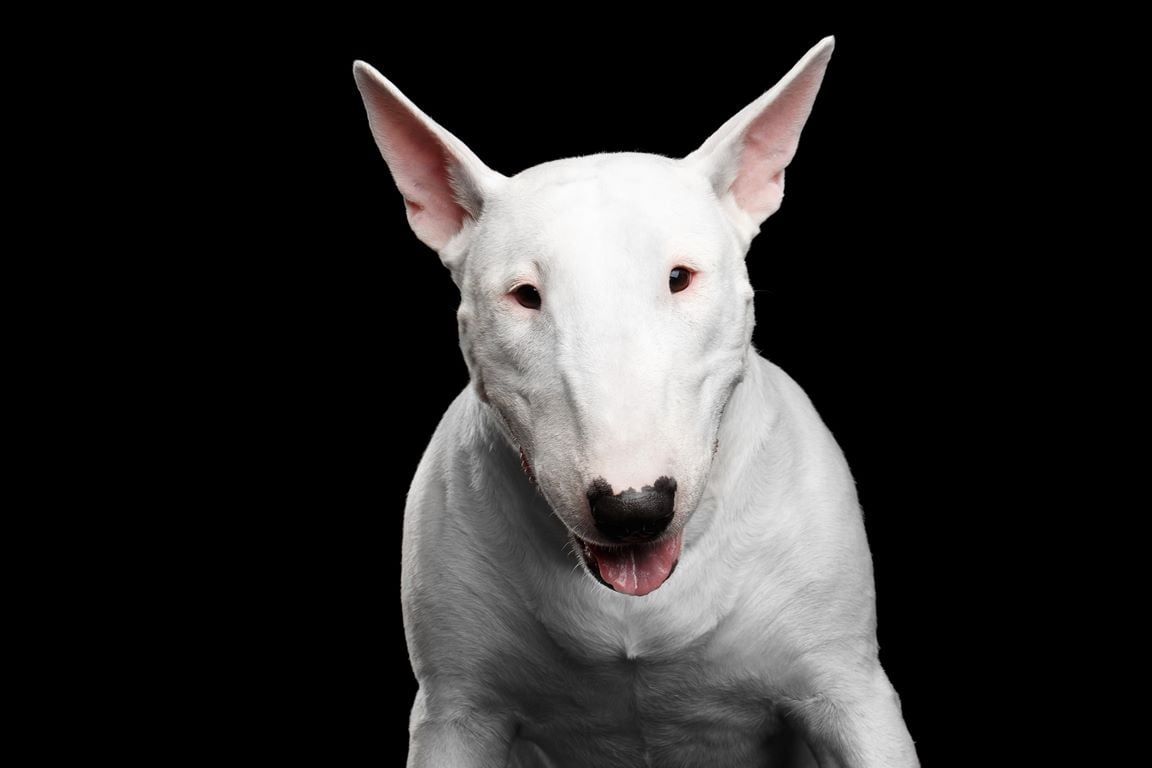
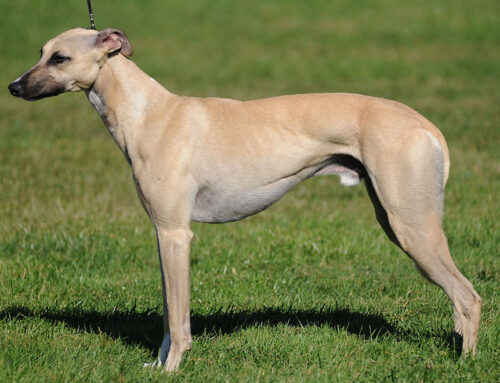
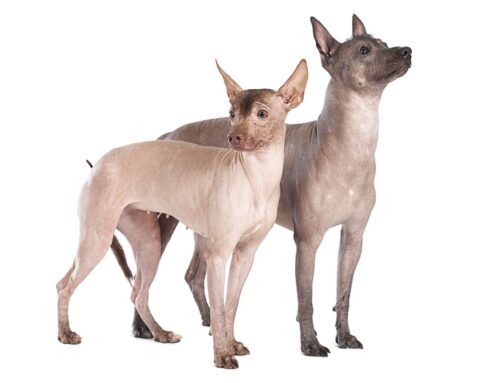
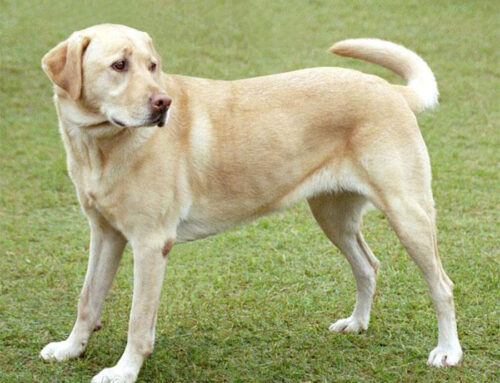
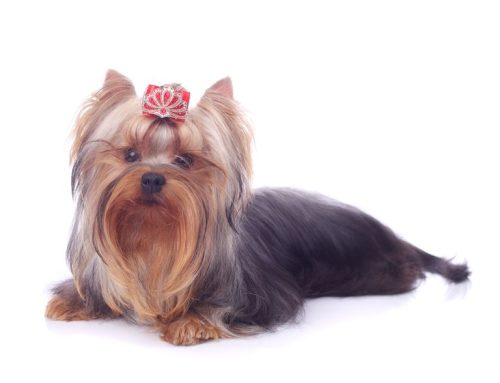
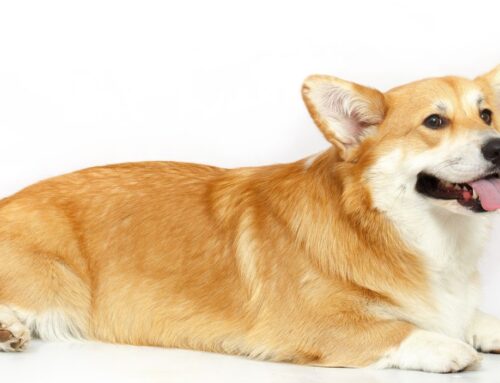
Leave A Comment